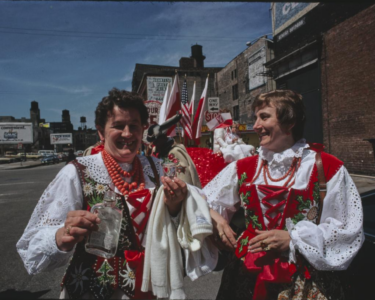
Welcome to the 40th Anniversary Season of National Philharmonic! Last year, NatPhil and the Library of Congress’s American Folklife Center formed a partnership to make cultural arts experiences more approachable and accessible. I’m estatic to continue this partnership and serve as your musicological guide in this new season.
Throughout the season, we will explore how pieces of classical music intersect with other forms of expressive culture.
Together, we will consider each piece as a function of the composer’s unique soundscape and circumstances. To do that, I will introduce a number of archival resources held at the American Folklife Center, which will help us to contextualize these pieces and nuance our understanding of them.
We will dive into the archives, hone our research skills, share our findings, and address any lingering questions. But we’ll have fun, too, as we strengthen our listening skills and enhance your concert experiece.
I assure you, regardless of your previous musical experiences or training, the partnership between National Philharmonic and American Folklife Center offers all of us the opportunity to learn – together.
Join me this 40th Season of National Philharmonic!
— Dr. Melanie Zeck

Dovydenas, Jonas. Polish Constitution Day Parade, Chicago, Illinois. 1977. Chicago Ethnic Arts Project collection (AFC 1981/004). American Folklife Project, Library of Congress.
Frédéric Chopin (1810 – 1849) was born in the Polish village of Żelazowa Wola, which is situated west of Warsaw along the Utrata River. Chopin was raised in a musical family and was largely considered a child prodigy on the piano. The Warsaw aristocracy enjoyed performances by the young musician, who had also begun honing his compositional skills. Having concertized with great success, Chopin decided at the age of twenty to pursue a professional musical career abroad. En route to Paris, he had traveled as far as Vienna when the Warsaw Uprising began at the end of November 1830. Worried and with no updates from home, Chopin remained in Vienna for several months, where he would write some of his most intensive and emotional works. He finally arrived in Paris in 1831, and he stayed there until his death in 1849.
Over the course of his career, Chopin wrote almost exclusively for piano, but his compositional output encompassed a range of genres. Among these genres were:
Indeed, with his nuanced understanding of the instrument, Chopin was able to transform melodic lines originally conceived for the human voice into virtuosic showpieces. Tonight, we will hear two examples of “theme and variations” pieces:
As you listen to Brian Ganz’s performance, consider the idiosyncrasies of Chopin’s style evident in his pieces for solo piano, especially the distinctive dance rhythms. How would you compare the 4 Mazurkas, Op. 68 and Sonata No. 1, Op. 4 with the “theme and variations” works and the Rondo for Two Pianos, Op. 73? And, in your assessment, consider how the addition of a second instrument (piano or flute) affects the musical outcome.
*
Chopin’s music is not generally considered “programmatic”—that is, his works do not tend to portray a specific non-musical concept or person. However, he was known to incorporate popular Polish tunes or dance rhythms in his pieces, thereby evoking a strong sense of Polish nationalism within his music.
You will also note that references to the five national dances of Poland—mazurka, krakowiak, kujawiak, oberek, and polonaise — can be found in many pieces, even though they were not actually intended to accompany dancing. Which ones will you hear this evening?
—-
To hear examples of Polish dance music, come to the American Folklife Center at the Library of Congress and explore the archival collections. Despite the word “American” in its title, the American Folklife Center has ethnographical materials in over 500 languages (including Polish), documenting cultural expression around the world. The Center also holds collections featuring performances of Polish Americans. Learn how to make the most of your visit to the American Folklife Center. And, when you visit us, be sure to view the wycinanki (Polish paper cuts) on display in the reading room and held in the archive.
National Philharmonic relies on the generosity of its donors to continue bringing you the music. Your contribution is critical to our continued success.